The Takarazuka Experience: Rurouni Kenshin
by Ken Iikura-Gross,Anime fans might not think about this too often, but there have been stage productions of popular anime, manga, and video game titles as early as 1966 with Sazae-san; such productions became dramatically more popular with the advent of the live Sailor Moon musicals, which have been embraced by English-speaking fans for years. In recent years, the number of productions has drastically increased, with works such as Black Butler, Glass Mask, Naruto, and The Prince of Tennis among others. Although they can't all claim to be major hits, one theater troupe has consistently created productions that draw large audiences: the world-renowned all-female Takarazuka Revue. Over the years, the Revue has adapted anime, manga, and video game works to the stage, such as The Rose of Versailles, Phoenix Wright: Ace Attorney, Black Jack, Lupin the 3rd, and most recently Rurouni Kenshin: Meiji Swordsman Romantic Story. These performances, particularly The Rose of Versailles, are extremely well known in Japan, but only a handful of people are able to attend their shows. Tickets are extremely difficult to purchase and often command high prices in auctions. But what exactly is the Takarazuka Revue, and why is it so popular in Japan?
Created in 1914 by Japanese industrialist Ichizō Kobayashi, the Takarazuka Revue was initially established to draw tourists to Takarazuka City in Hyogo Prefecture, as well as bolster passengers for the Hankyu Railway system. The Revue was unique in that it was an all-women's theater troupe, counter to the male-only Kabuki Theater, and admirers quickly flocked to Takarazuka City to watch their performances. Since the inception of the Revue, part of the allure has always been the specialization of each actress—commonly referred to as Takarasienne (inside the company they're referred to simply as 'Seito' until they graduate from the revue company) to either male roles, otokoyaku, or female roles, the musumeyaku. It takes years of practice to master either type of role, but doubly so for the women who perform the male parts. As such, the star of most shows is always the lead otokoyaku, a testament to their talent and years of studying male performance. Previously, there were prominent musumeyaku leads, but that practice has faded with time; otokoyaku dominate the lead roles.
As the popularity of the Revue grew, it was inevitable that the Takarazuka Grand Theater would open its doors to the public in 1924. The current Grand Theater was rebuilt in 1993 and can seat over 2500 people between the two floors. It's a very lavish theater, and anyone would be lucky to see a performance in its hallowed halls. It would be another ten years before the Revue expanded its operations to Tokyo's Yūrakuchō, when the Tokyo Takarazuka Theater finished construction in 1933. As with the Grand Theater, the Tokyo Theater was rebuilt in 2001 and can now seat over 2000 people between its two floors. The Revue performs 1500 shows annually between these two theaters (the second hosts smaller plays and shows that don't have a revue section) and the occasional international performance.
The Takarazuka Revue is able to put on so many shows yearly thanks to its five-troupe configuration. The five troupes are the Flower, Moon, Snow, Star, and Cosmos, and each focuses on different performing styles, though these traditions are changing over time. So depending on the troupe performing, viewing experiences can be vastly different. For example - and again, it's important to keep in mind that these are classical assumptions about these troupes, but the experiences are changing now - the Flower Troupe is generally the oldest (although their previously unique large stage budgets are now generally afforded to every troupe), while the Moon Troupe has been known for a stronger focus in singing. The Snow Troupe will sometimes focus on traditional Japanese dance and theater styles, while the Star Troupe sports some of the tallest otokoyaku in the Revue, and the Cosmos Troupe features the youngest performers. One extra troupe also exists within the Revue: the Superior members. The Superior members appear in each of the other troupe's productions as older side characters, but they also help instruct the junior members of the troupe, providing an essential service to the future of the Revue as a whole.
This begs the question: how does a young woman enter the Takarazuka Revue? Girls between the ages of 15 to 18 can apply to the Takarazuka Music School (TMS), which is the preeminent school of musical theater in Japan, somewhat akin to Julliard in New York City or the Royal Academy of Dramatic Art in London. Every year, thousands of young Japanese girls apply to the school, but only 40 are accepted. The competition among applicants is fierce, as they must go through numerous rounds of interviews, dancing and singing trials, and even medical examinations. Those lucky enough to enter the TMS spend the next two years training in various disciplines like chorus, piano, and wide ranges of dance from classical ballet to traditional Japanese dance to modern dance. The training is difficult (legend says there's cleaning-the-bathroom-with-a-toothbrush detail involved), but it's worth the effort to perform with the Takarazuka Revue.
While only a handful of Takarazuka productions are adaptations of anime, manga, or video game properties, they're of some of the most well-known titles in Japan. The Rose of Versailles is among the most famous Takarazuka adaptations (their version of the German musical Elisabeth eclipsed it), but 2016 saw another massively popular manga series adapted for the stage, when the Snow Troupe, who also handled the revue's Lupin play, performed Nobuhiro Watsuki's Rurouni Kenshin: Meiji Swordsman Romantic Story. I wouldn't say the popularity of this show was unparalleled, but tickets were definitely difficult to purchase - just about impossible, in fact. The top Takarazuka stars (and up-and-comers) have dedicated fan clubs who see it as their duty to make sure their performances are sold out - but it isn't even simple for them. In fact, members of the Takarazuka Revue Official Fan Club had to send in multiple requests to purchase reserved tickets, and even then they weren't guaranteed to get them. Through some very dumb luck on my part, I managed to procure a ticket to the April 22 show of Rurouni Kenshin from a friend of my mother, and I have to thank her for the once-in-a-lifetime experience.
The Tokyo Takarazuka Theater was a wonderful establishment, and its very entrance gives a marvelous first impression. The staircase leading to the second floor had a beautiful red carpet that would make anyone crossing it feel like a celebrity. But it was actually the gift shop located to the left of the main entrance that stood out most. Although it's not all that large, it features wonderful memorabilia of the Revue like bromide pictures of the Takarasiennes, DVD recordings of productions, CD soundtracks, edible gifts like themed cookies and miniature cupcakes, programs, and most importantly, photos of each troupe's star Takarasiennes from their most recent production, along with other actresses who are on the track to stardom. The hustle and bustle inside the gift shop before opening curtain was a thrill that can't easily be replicated. The entrance hall also featured a bust of Ichizō Kobayashi that many patrons took pictures with. I had a seat front and center on the second floor, giving me a wonderful view of the stage that made the viewing experience extremely pleasant.
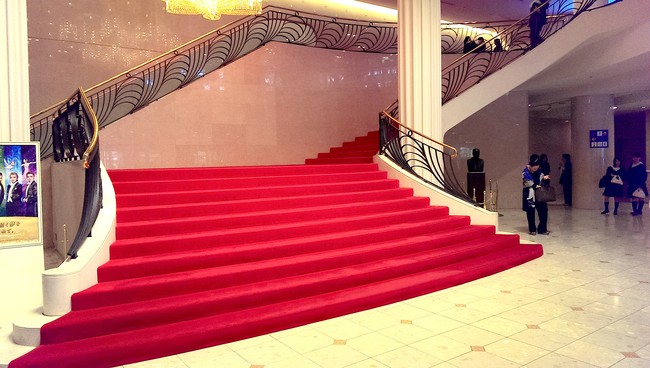
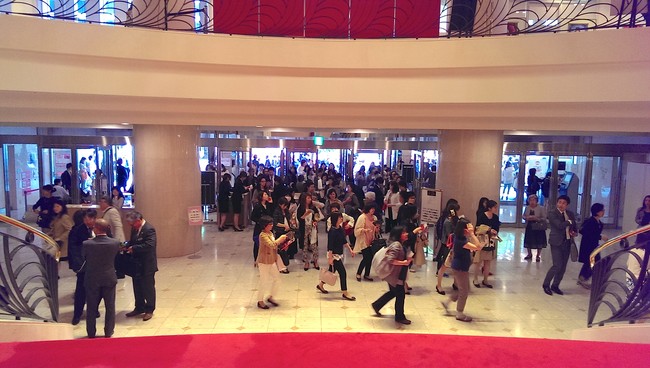

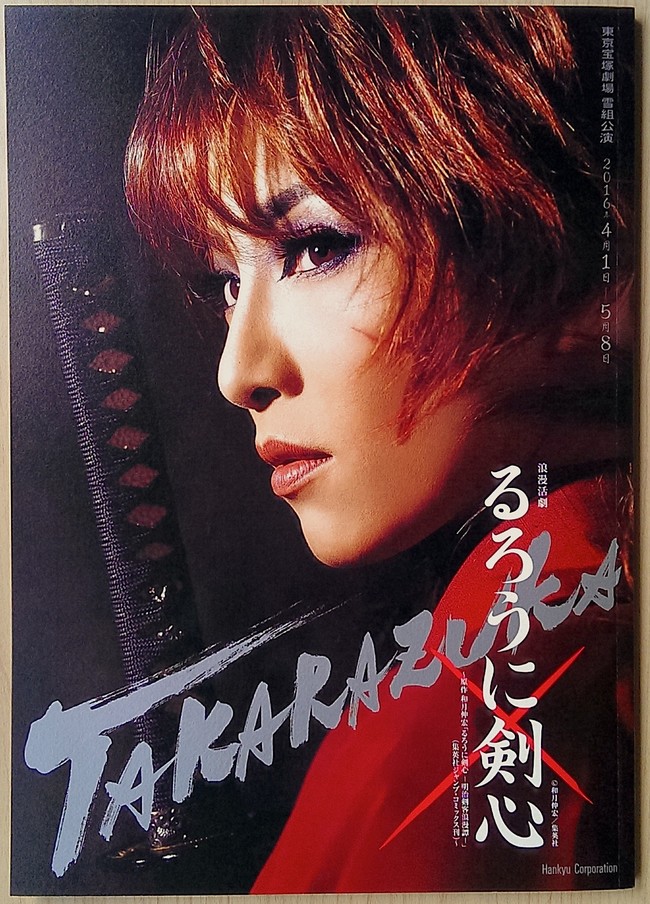
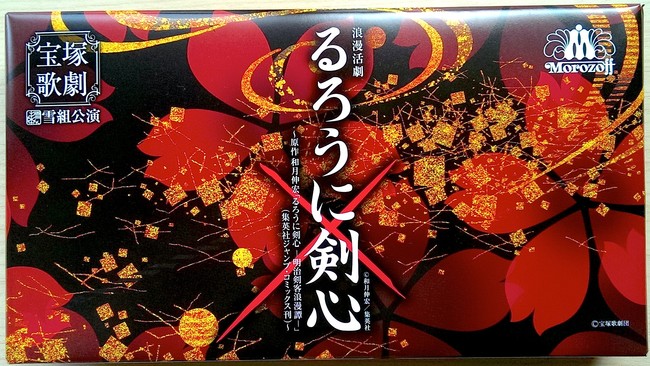
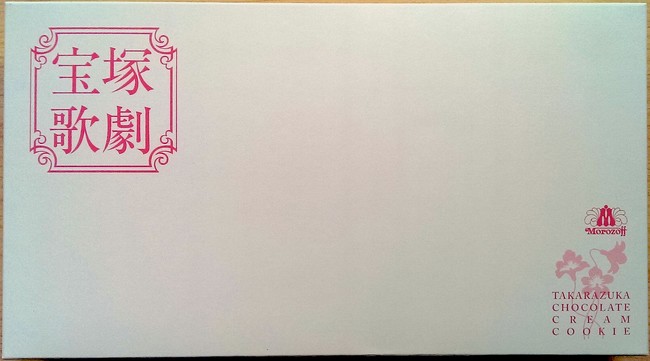
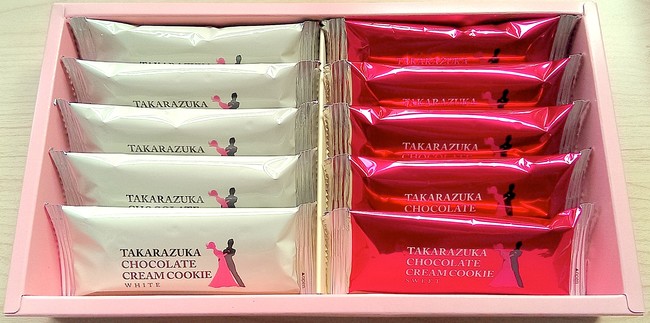
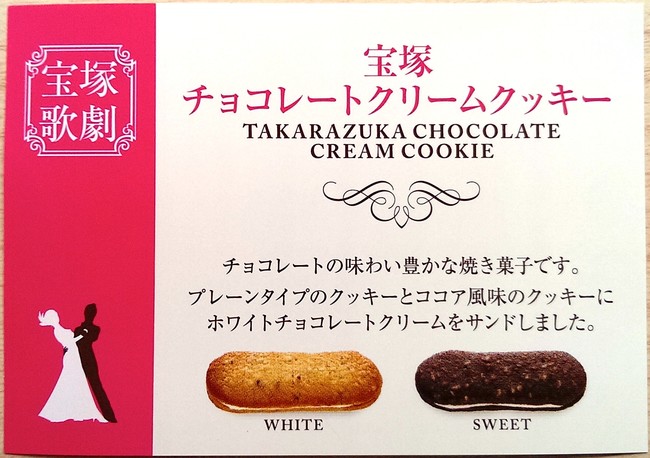
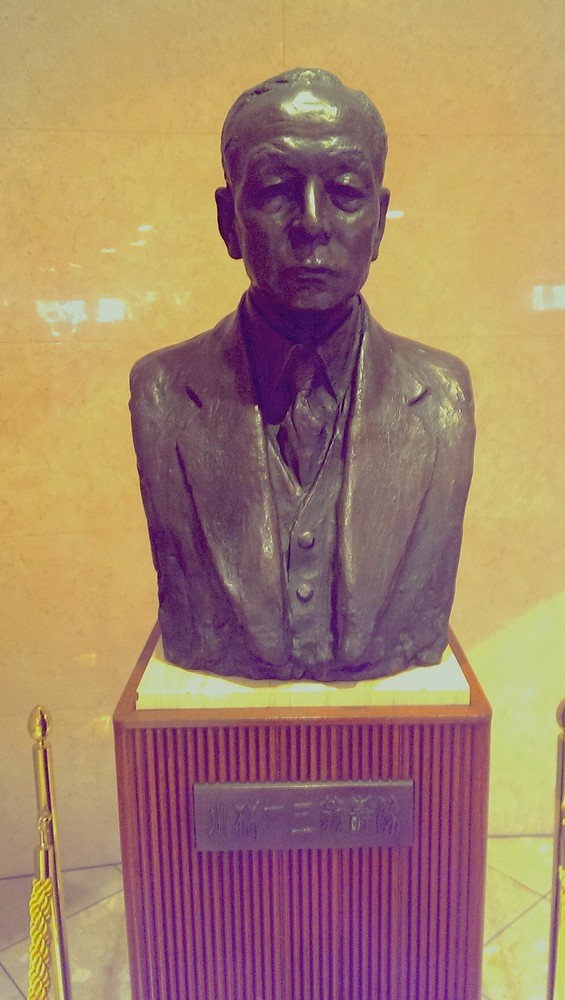
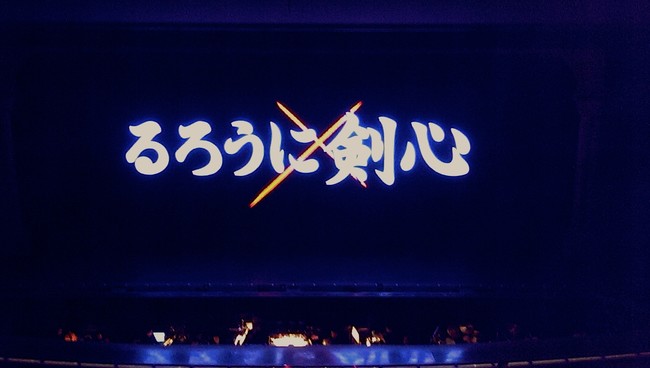
The most exciting part of the performance was the Revue itself, where the troupe performed a number of short dance pieces. The dances ranged from a Las Vegas or Parisian-style line show to a modern dance performance to the curtain call where the show's main roles descended a staircase wearing extravagant feathered back-pieces. In all honesty, I was jealous of the flair in those back-pieces (called "parades") and wanted to try them on for size (which you can do, via appointment at the 'Salon de Takarazuka', which makes your Takarazuka makeover dreams come true). The true spectacle came after the show was over, though. As with other stage productions, fans of the Revue and certain Takarasienne lined up and waited for the performers to exit the theater. Instead of this turning into a crowded mess, fans quickly organized themselves into clubs for different performers and waited patiently on either side of the street in front of the theater (before AND after the show). The color-coded scarfs and other apparel used to identify the different clubs was a sight to behold, but there was an interesting ritual as part of the whole event. Club members - the ones in official club wear, anyway - would kneel when a Takarasienne left the theater out of respect. These are her "guard", and they're allowed to present the Takarasienne with gifts and letters; everyone else, the "gallery", they're allowed to take photos but interaction is forbidden. Whenever a prominent Takarasienne exited the building, she stopped at her fan club "guard" and received fan letters while sharing a few words with them. The dedication of both the club members - who literally will not leave until all the performers have left after the show, even when it's raining - and performers was inspiring and a beautiful sight to behold.
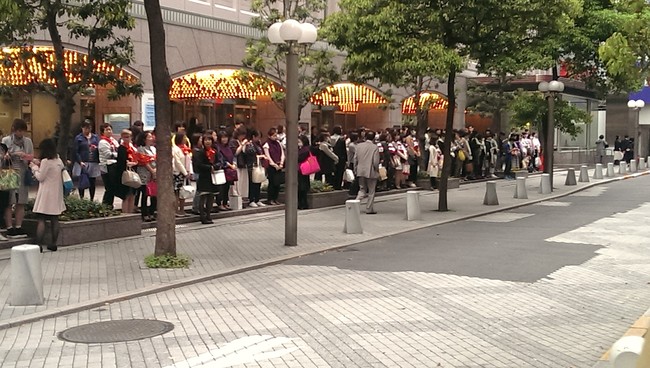
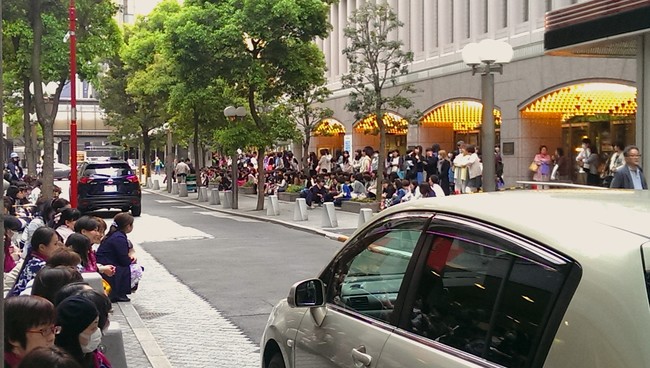
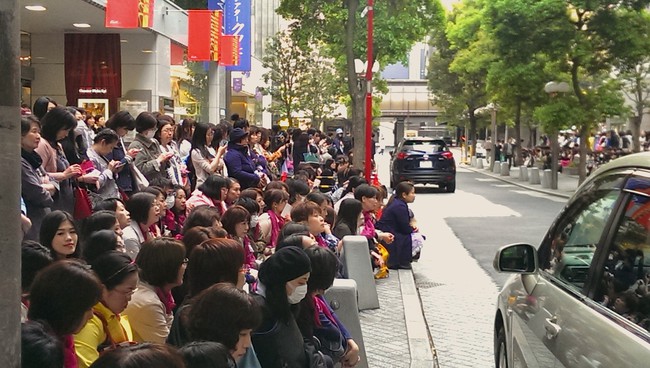
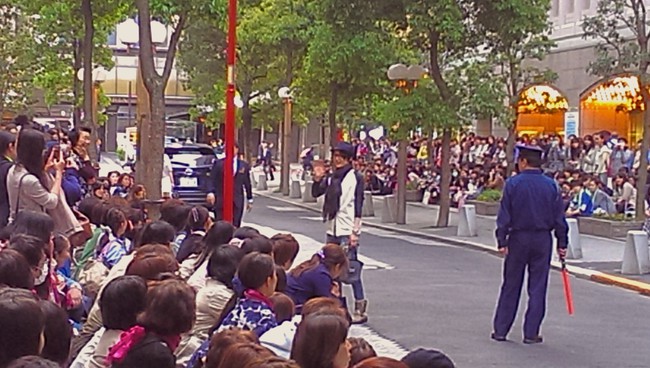
This was all well and good, but as an anime and manga fan, I was most interested in how the Snow Troupe would interpret Rurouni Kenshin. There were some minor changes to the story, but for the most part, it covered the events up to the sixth or seventh volume of the manga series. The first act introduced the setting and all the prominent characters, while the second and third acts covered the opium story arc. It was a fantastic performance, but some aspects of the show did become tiresome. The prolonged introduction of each character (Himura Kenshin, Kamiya Kaoru, Sagara Sanosuke, Myōjin Yahiko, Takani Megumi, Shinomori Aoshi, and Saitō Hajime) dragged down the pacing, but I fully understand why this first act was tedious—I was already familiar with the characters and the story. So while it was wearisome for me, the first act accomplished what it needed to do by introducing those who weren't familiar with the material to the characters and setting, even if it took a whole act to get through it all.
However, the performances of the Takarasienne were spectacular. I don't watch stage productions all that often, especially musicals, but each scene was captivating in its own right. This was especially true of the song and dance numbers that quickly absorbed me into the story, as the choreographers did an excellent job of creating each set piece. The five choreographers for Rurouni Kenshin have worked with the Takarazuka Revue in the past (Sha Tamae, Wakao Risa, and Suzukake Miyuki were all Takarasienne prior to becoming choreographers), and each has an impressive resume. But there was one specific scene of the production that fascinated me to no end. Simply put, it was one of the best renditions of a drug high I've seen to date. The performers' movements were evocative, and the background dancers also emphasized the feeling of characters caught in the web of an opiate. More importantly, the scene explored Kenshin's background in a far superior way to the original manga. I highly suggest Kenshin fans see this musical on that one scene alone. DVDs of the performance shouldn't be too tough to find on their site, but we recommend a shopping service that can help you out if you're having trouble; the website won't ship overseas.
My experience with a Takarazuka Revue performance was beyond impressive. I'm more than tempted to become a Takarazuka Revue Official Fan Club member just so I might have the chance to see other anime, manga, and video game adaptations of theirs. More information about the Revue can be found at their respective homepages. A preview of the Snow Troupe's rendition of Rurouni Kenshin: Meiji Swordsman Romantic Story can be found on the Takarazuka Revue youtube page [along with a brief history of the Revue.
discuss this in the forum (20 posts) |
this article has been modified since it was originally posted; see change history